#planetree
Explore tagged Tumblr posts
Text

#IFTTT#Flickr#leaves#blieder#november#hierscht#fall#autumn#colour#faarwen#d850#bam#tree#studio#found#zugeflogen#platane#planetree
4 notes
·
View notes
Text
Hi everyone,
If you're involved in healthcare management, patient care, or medical administration, improving patient experience is something you definitely want to focus on. The Excellence in Patient Experience & Involvement course is designed to equip you with the skills and knowledge needed to transform the patient experience in healthcare settings, ensuring a higher level of patient satisfaction and better outcomes.
Why This Course is Essential:
Improved Patient Satisfaction: Learn how to enhance patient experience using effective communication, relationship-building, and leadership techniques.
Patient-Centered Culture: Discover how to build a patient-centered culture that engages employees and fosters exceptional care for patients.
Innovative Patient Experience Frameworks: Use Planetree and experience-based design methods to identify strengths and improve patient care systems.
Diversity & Cultural Competence: Gain insights into cultural diversity and learn how to respect diverse patient needs and preferences to improve decision-making in care.
Practical Experience: The course includes a field visit to a public hospital, where you’ll observe how healthcare professionals impact patient satisfaction daily.
Key Skills You’ll Gain:
Effective Communication: Master both verbal and written communication skills to ensure your patients feel heard, valued, and well-informed.
Leadership for Patient-Centered Care: Learn leadership strategies to foster a coaching culture within your healthcare organization.
Feedback Collection: Learn how to measure patient satisfaction effectively through surveys and feedback, and use this data to improve care.
Marketing & PR Campaigns: Discover how to promote patient-centered care through targeted marketing campaigns that enhance community engagement and raise awareness.
This course will give you the tools to transform patient care, build stronger relationships with your patients, and create a compassionate and efficient care environment.
For more details and to register, check out the full course here: Excellence in Patient Experience & Involvement
Have any thoughts or questions on improving patient experience? Let me know in the comments—I’d love to hear from other healthcare professionals!
#PatientExperience #HealthcareManagement #PatientCare #MedicalAdministration #HealthcareLeadership #PatientSatisfaction #CulturalCompetence #PatientCenteredCare #HealthcareTraining #MedicalEducation #HealthCommunication #PatientFeedback #HealthcareProfessionals #PublicHospital #Planetree #ExperienceBasedDesign #HealthcareMarketing #PRInHealthcare #PatientEngagement #HealthSystems #HealthcareExcellence #TransformingCare
#PatientExperience#HealthcareManagement#PatientCare#MedicalAdministration#HealthcareLeadership#PatientSatisfaction#CulturalCompetence#PatientCenteredCare#HealthcareTraining#MedicalEducation#HealthCommunication#PatientFeedback#HealthcareProfessionals#PublicHospital#Planetree#ExperienceBasedDesign#HealthcareMarketing#PRInHealthcare#PatientEngagement#HealthSystems#HealthcareExcellence#TransformingCare
0 notes
Photo

Mira "among the fir trees" de athanecon que me gustó en flickr
#flickr#autumn#autumncolors#autumncolours#autumnmelancholy#autumnmood#autumnroadtrip#reflection#reflections#reflektion#reflejos#lake#doxalake#tree#trees#planetree#firtrees#clouds#cloud#cloudysky#sky#greekcountryside#countryside#greece#peloponese#peloponisos#nikon#nikonphotography#nikoneurope#nikonglobal
0 notes
Text
The Trees and What They Hold~

View On WordPress
#DailyThoughts mimokhair#NatureAndHumanNature#PhotographyWalk#PlaneTrees#SeasonsOfLife#SpringReflections#UrbanTrees#VisualDiary#Düsseldorf#resilience#streetphotography
0 notes
Text
I wanted to see other people discussing laura gilpin cuz she's my favorite poet and wrote my favorite poem (two headed calf) but like. Okay I know I just said it's my favorite but like yall know she wrote two whole books of poetry right 😭 like I could go ON about her she is a fascinating and amazing woman
#laura gilpin#literally yall please read watching my mother sleep or like#my shadow is leaving me#ill probably bitch more about this in the morning but yall i need you to get on the laura gilpin train#she deserves more recognition for her work in poetry and as a nurse and founding member of planetree 😭#i kobe jer so much....#she always makes me sob#poetry
1 note
·
View note
Text
The Walking Twins of Roosendael
Breaking News! Two planes have crashed to the ground at Roosendael in Flanders, Belgium. Miraculously, no one was killed, and they walked away from the wreckage.

The Walking Twins of Roosendael
So free and beautiful, tall in the sky, they flew,
Until a great storm raged and raged and blew,
Their hands slipped, their embrace was broken,
Crashing to the ground, their neighbours were woken,
No one was killed, only slight injuries,
The miraculous Walking Twins of Roosendaal are no 'plain' trees!
Tree hunter Rob McBride Sept. 2023
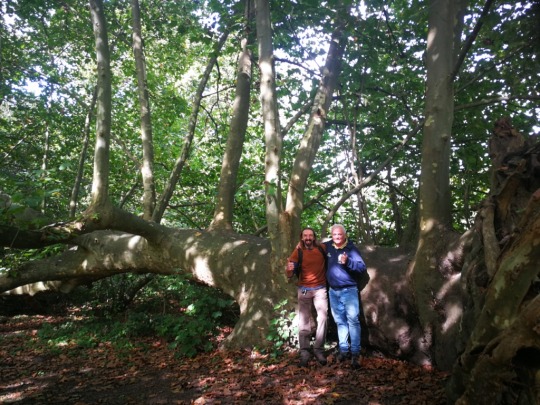
Platanus x hispanica (London Plane)
Bomen Beter Beheren weekend in Roosendael - Sint-Katelijne-Waver Arboweekend 29 sept – 1 okt Domein Roosendael - Veterane bomen Massive thanks to organisers, Willem Van Der Linden, Sander Van Coillie, plus Kjel Dupon and Wim Peeters, and all the incredible arborists and attendees that came to such an amazing event. Thank you also to the Catering Staff for the delicious food and drink. And special thanks to speakers... Nico d’hamers ; Kris van de kerkhove; Jeroen Snaaijers ; Ruben van Praag ; Koen Smets ; Frits Gielissen ; Guy Herremans ; Alex Lefevre Thanks also to Belgian Tree hunters Roel Jacobs and Marc Meyer for their inspiration and trips around the Great Trees of Belgium over many years.
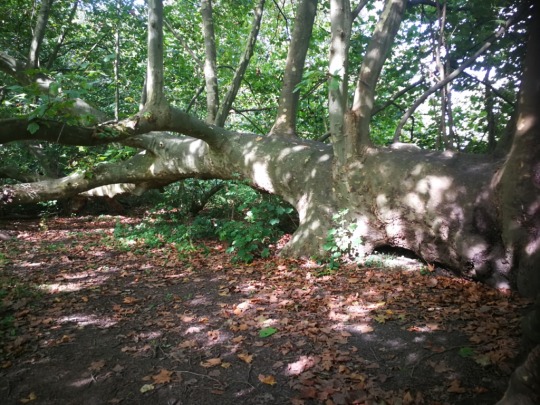
The 'Not-so Plain' Walking Twins of Roosendael

The Planes crashed to the Earth...Now they 'Walk' to London...

Platanus xhispanica (London Plane)
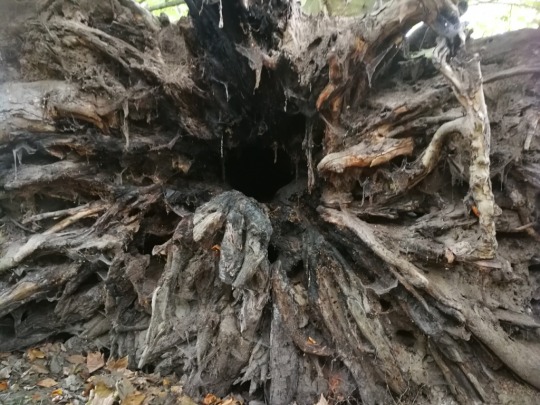

They are no longer 'ROOTED' to the spot....The Walking Twins of Roosendael... They are an OPEN CLASSROOM for everyone to learn about the wonders of trees... PHOENIX trees regenerate and root after falling to the ground...essentially, they 'walk' across landscapes. In three hundred years, these Platanus will be a long way from the 'Mother Trees'.

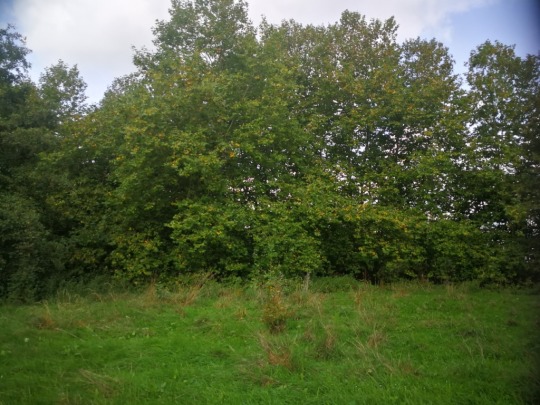
Not any old PLANE Forest...a real gem of Europe...
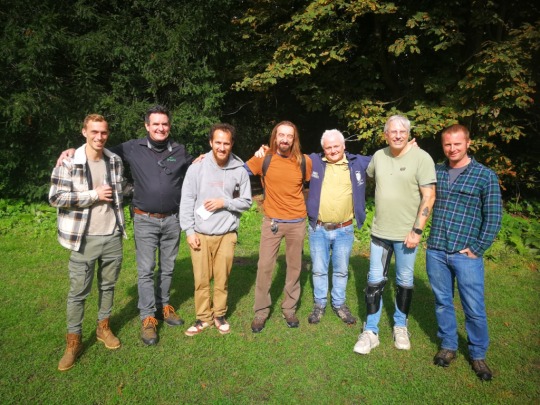



Wonderful, tree man Ton above tree man arborist Bert

Playing the 'Nail' game... Arjan below is the Champion mostly.. If I can remember! Lol.



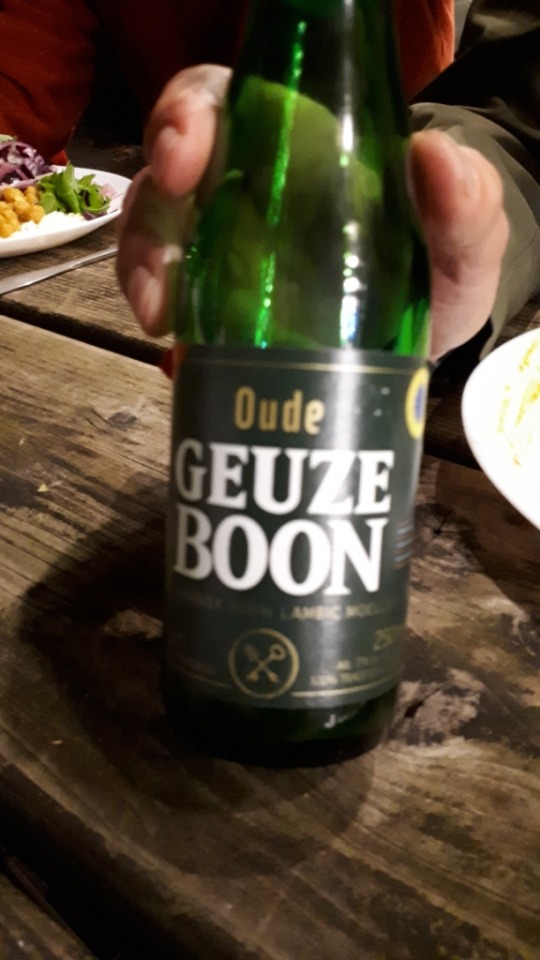


Such an important event for all of these excellent arborists to come together to discuss veteran trees and so much more...
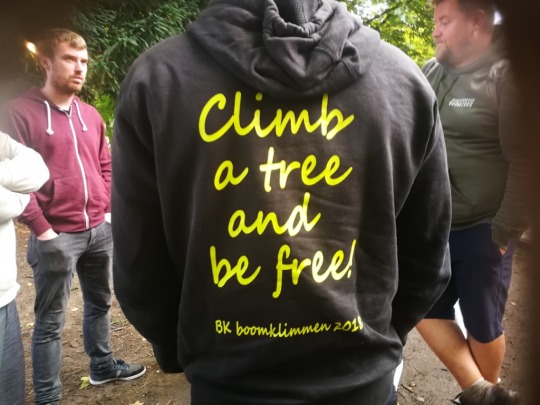

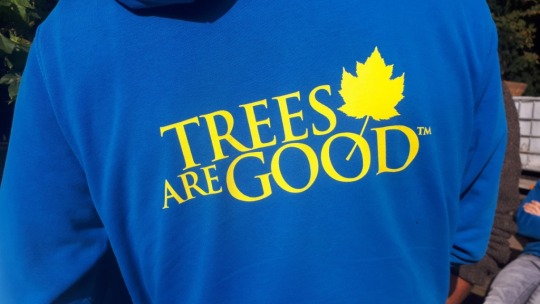

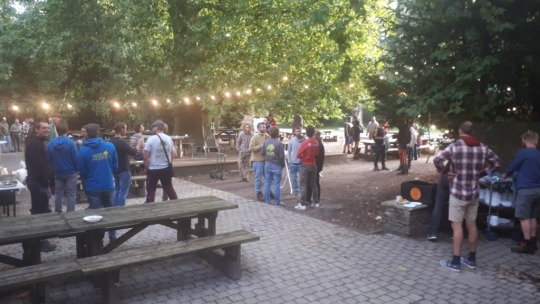
I look forward to the next event with Bomen Beter Beheren.
#planetrees#platanus#veterantrees#bomen beter beheren#roosendael#mechelen#flanders#belgium#treehunter#thetreehunter#arborists#Arboweekend#Sint-Katelijne-Waver#Domein Roosendael#Veterane bomen#Koen Smets#Frits Gielissen#Guy Herremans#Kris van de kerkhove#Nico d’hamers#Jeroen Snaaijers#Ruben van Praag#Alex Lefevre
1 note
·
View note
Text



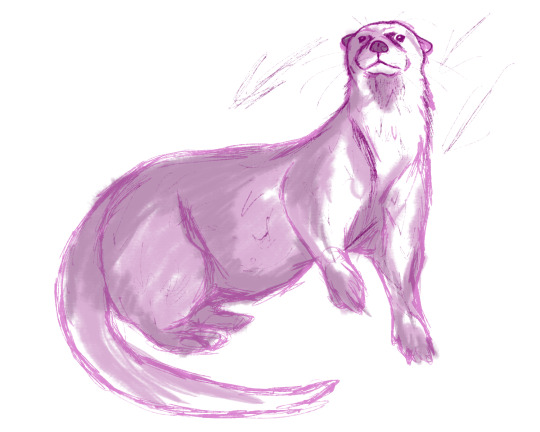
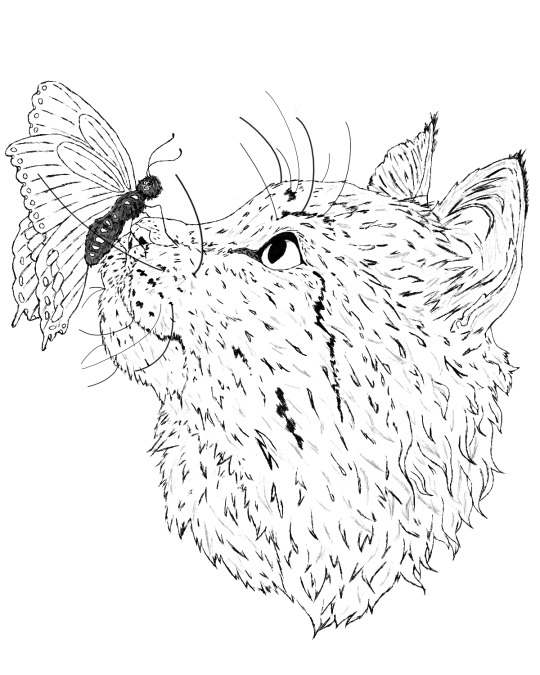


The rest of my college bound drawings that I have saved on my phone. I definitely had more. Like I finished the fish and I drew a London Planetree for a professor that sadly, did not get saved on my phone. The owl was a gift for a friend and the squirrel’s name was Reginald. 😋
5 notes
·
View notes
Text
The wallpaper has started to peel off. It bloats and then spalls, tearing along every seam. There are trees who shed their bark like this. Planetrees, he believes they're called. But Bertholdt lacks the whimsy to imagine that he is living in the heart of some tree. The apartment has been hollowed out of the complex like a man was digging around for a bullet. Now there is the rot, the necrosis. Bertholdt sits for days on end, at the kitchen table, and stares at the wall as it peels off. He's been informed that this is called rest and relaxation.
He is in the process of lighting a cigarette when the rapping at his door disrupts his oily yellow evening. The sun has not yet sunken. It sets all the roofs aflame and chips off the spires of the internment wall. He looks for it, when he noisily pushes his chair back. He makes sure that it is still there, that he is still on the correct side of it. The cigarette is stubbed to death in a coffee mug that hasn't seen coffee in some time.
The last person he expected to find on the other side of his threshold is her. Annie arrives like a cold front. He can barely scrape the dust off his vocal chords to invite her in before she already slinks past him. Alley cat grace, vampiric customs.
"I—" His voice is a stillborn thing, arrives scaley and disjointed. He coughs to break through a layer of tar that's caked up his throat. "I wasn't expecting anyone. What's the occasion?"
@calcitration says: “ i’m here to raid your cupboards ‘cause my date went really bad and all i’ve had is lukewarm water and breadsticks. ”
What constitutes his stomach these days sinks. That biting remark, grumbled as if the mere act of speaking is an inconvenience (and isn't it?), is enough to cut Bertholdt's tongue out. He watches Annie rummage through his meager rations of canned goods, sardines and pickled onions, a stray pack of hardtack, and his mouth fills up with blood.
"...Date? Like, a date?"
#i love a man who is an embarrassment#verse : may we all be so lucky.#calcitration#bertholdt : annie.
7 notes
·
View notes
Text
Ooooh- dwarf chinquapin oak! Hmmm 12-25' tall... but dwarf variety may stay small especially as it'll be basically understory to our big old planetree...?
Might still consider the redbud bc 20yrs isn't nothing, like the above oak trees live 20-30yrs apparently, so. And flowers are nice..
Hm, never heard of Leatherwood before, it's a shrub not a tree but the lines between the two are wiggly anyway. Only thing is it prefers moist to wet soil, it's really best for swampy areas. But it's very cute and I love the yellow in I assume fall. Kind of has a tree-ish habit. Long lived. But hates dry soil. So.
Hm
Oh!! I forgot about spicebush!! 5' in shade, up to 12' in full sun. Not too bad. Gorgeous yellow! Early blooming flowers like the non native forsythia! V pretty! Grows like a small tree! I think it might be the winner!
0 notes
Text
The Best Trees to Plant in Fairfield County: A Homeowner's Guide

Table of Contents
Introduction 1.1 Overview of Best Trees to Plant in Fairfield County 1.2 Importance of Choosing the Right Trees
Understanding Fairfield County's Growing Environment2.1 Climate Considerations 2.2 Soil Conditions 2.3 Local Environmental Challenges
Native Trees: The Foundation of a Sustainable Landscape3.1 Red Oak (Quercus rubra) 3.2 Sugar Maple (Acer saccharum) 3.3 American Beech (Fagus grandifolia) 3.4 Eastern White Pine (Pinus strobus) 3.5 American Hornbeam (Carpinus caroliniana)
Recommended Non-Native Trees for Fairfield County4.1 Japanese Maple (Acer palmatum) 4.2 Kousa Dogwood (Cornus kousa) 4.3 Ginkgo (Ginkgo biloba) 4.4 London Planetree (Platanus x acerifolia) 4.5 Serviceberry (Amelanchier species)
Best Trees for Specific Landscape Needs5.1 Trees for Small Spaces 5.2 Fast-Growing Shade Trees 5.3 Trees for Wet Sites 5.4 Trees for Coastal Properties 5.5 Trees for Fall Color
Best Practices for Tree Planting in Fairfield County6.1 Optimal Planting Seasons 6.2 Site Preparation 6.3 Planting Technique 6.4 Post-Planting Care
Professional Tree Services for Your Fairfield County Property7.1 Site Assessment 7.2 Tree Selection Assistance 7.3 Proper Planting 7.4 Maintenance Planning 7.5 Problem Solving
Conclusion8.1 Long-Term Benefits of Proper Tree Selection in Fairfield County 8.2 Professional Guidance from Fairfield Tree Service
Selecting the right trees for your Fairfield County property is a decision that impacts your landscape for decades to come. The unique climate, soil conditions, and environmental challenges of our Connecticut region make some tree species particularly well-suited to thrive here, while others may struggle. At Fairfield Tree Service, we're committed to helping local homeowners make informed choices that enhance their property's beauty, value, and environmental health.
This comprehensive guide explores the best tree species for Fairfield County properties, with specific recommendations based on different landscape needs, planting locations, and aesthetic preferences.
Understanding Fairfield County's Growing Environment
Before selecting trees for your property, it's important to understand the specific conditions that will affect their growth and health in our region.
Climate Considerations
Fairfield County's climate presents both opportunities and challenges for tree growth:
Hardiness Zones: Our region primarily falls within USDA Hardiness Zones 6a to 7b, with variations based on proximity to the coast and elevation
Temperature Range: We experience cold winters with average lows between 0°F and 10°F, and warm summers with highs typically in the 80s
Precipitation: Annual rainfall averages 45-50 inches, generally well-distributed throughout the year
Seasonal Changes: Distinct four-season climate with notable spring and fall transitions
Soil Conditions
Soil types vary throughout Fairfield County, affecting tree selection and care requirements:
Predominant Soil Types: Many areas have glacial till soils with variable drainage and rocky composition
Coastal Influence: Properties closer to Long Island Sound may have sandier soils
Urban Factors: Urban and suburban areas often have disturbed, compacted soils that may require amendment
pH Variations: Soil pH typically ranges from slightly acidic to neutral (5.5-7.0)
Local Environmental Challenges
Several environmental factors should influence your tree selection:
Road Salt Exposure: Trees near roadways must tolerate salt spray during winter months
Urban Heat Island Effect: Trees in more developed areas face higher temperatures and reflected heat
Storm Resilience: Our region experiences nor'easters, occasional hurricanes, and heavy snow events
Pest Pressures: Consider resistance to regional pests like Emerald Ash Borer and Spotted Lanternfly. Learn more about common threats to your trees in our detailed guide on Tree Pests and Diseases in Fairfield County.
Native Trees to Plant: The Foundation of a Sustainable Landscape
Native trees have evolved in our local conditions for thousands of years, making them naturally adapted to Fairfield County's climate, soils, and ecosystem. They generally require less maintenance, provide better wildlife habitat, and contribute to local biodiversity.
Red Oak (Quercus rubra)
The Red Oak stands as one of the most majestic native trees for larger Fairfield County properties:
Growth Characteristics: Reaches 60-75 feet tall with a similar spread; moderate to fast growth rate
Aesthetic Appeal: Glossy dark green summer foliage turns russet-red to bright red in fall
Site Requirements: Adaptable to various soil types; prefers full sun but tolerates partial shade
Benefits: Excellent shade tree; supports over 500 species of caterpillars (important for birds); produces acorns valuable to wildlife
Considerations: Requires adequate space; avoid planting where Oak Wilt disease is present
Sugar Maple (Acer saccharum)
Connecticut's state tree, the Sugar Maple offers spectacular fall color and classic New England character:
Growth Characteristics: Grows 60-75 feet tall with a rounded, dense crown; moderate growth rate
Aesthetic Appeal: Dark green summer foliage transforms to brilliant orange, red, and yellow in fall
Site Requirements: Prefers well-drained, slightly acidic soil; sensitive to road salt and compaction
Benefits: Excellent shade; stunning fall color; potential for maple syrup production
Considerations: Avoid planting in confined urban spaces or near roads; susceptible to verticillium wilt
American Beech (Fagus grandifolia)
This stately native tree creates a powerful landscape presence:
Growth Characteristics: Reaches 50-70 feet tall with a wide, dense crown; slow to moderate growth
Aesthetic Appeal: Smooth, silver-gray bark; dark green leaves turn golden bronze in fall and often persist through winter
Site Requirements: Prefers moist, well-drained, acidic soils; does well in partial shade
Benefits: Smooth bark adds winter interest; beechnuts provide wildlife food
Considerations: Currently threatened by Beech Leaf Disease in Fairfield County; best in protected locations
Eastern White Pine (Pinus strobus)
For evergreen screening and year-round interest, Eastern White Pine is an excellent native choice:
Growth Characteristics: Grows 50-80 feet tall with a 20-40 foot spread; relatively fast growth rate
Aesthetic Appeal: Soft, blue-green needles in bundles of five; graceful, somewhat irregular form
Site Requirements: Adaptable to various soils but prefers moist, well-drained conditions; full sun to partial shade
Benefits: Provides year-round screening; soft appearance in the landscape; wildlife habitat
Considerations: Can be susceptible to white pine blister rust and weevils; avoid sites with air pollution
American Hornbeam (Carpinus caroliniana)
Also known as Musclewood, this understory native is perfect for smaller spaces:
Growth Characteristics: Typically 20-30 feet tall with similar spread; slow growth rate
Aesthetic Appeal: Distinctive smooth, sinewy "muscled" gray bark; excellent orange to red fall color
Site Requirements: Adaptable to various soils; performs well in partial shade
Benefits: Works well as an understory tree; relatively pest-free; four-season interest
Considerations: Slow growth rate; may require protection from deer when young
Recommended Non-Native Trees for Fairfield County
While native trees form the foundation of a sustainable landscape, certain non-native species have proven well-adapted to our region without becoming invasive. These trees can add diversity and special features to your property.
Japanese Maple (Acer palmatum)
These elegant small trees add refined beauty to Fairfield County landscapes:
Growth Characteristics: Typically 15-25 feet tall and wide; slow growth rate
Aesthetic Appeal: Delicate, often dissected foliage in various colors; sculptural branching pattern
Site Requirements: Prefers moist, well-drained soil with protection from afternoon sun and winter winds
Benefits: Excellent specimen tree; works well in smaller spaces; four-season interest
Considerations: May require winter protection when young; avoid exposed sites
Kousa Dogwood (Cornus kousa)
More disease-resistant than our native flowering dogwood, Kousa dogwood offers multiple seasons of interest:
Growth Characteristics: Reaches 15-30 feet tall and wide; moderate growth rate
Aesthetic Appeal: White "flowers" (actually bracts) in late spring; raspberry-like red fruit; exfoliating bark; red-purple fall color
Site Requirements: Prefers moist, well-drained, acidic soil; tolerates full sun to partial shade
Benefits: More resistant to anthracnose than native dogwood; multi-season interest
Considerations: Fruits can be messy on paved surfaces; best with afternoon shade
Ginkgo (Ginkgo biloba)
One of the world's oldest tree species, ginkgo is remarkably adaptable to urban conditions:
Growth Characteristics: Grows 50-80 feet tall with variable spread; slow to moderate growth
Aesthetic Appeal: Unique fan-shaped leaves turn brilliant yellow in fall
Site Requirements: Extremely adaptable to soil conditions; pollution and salt tolerant
Benefits: Very long-lived; resistant to pests and diseases; excellent urban tree
Considerations: Plant only male cultivars to avoid messy, malodorous fruit; somewhat irregular form when young
London Planetree (Platanus x acerifolia)
This tough hybrid tree thrives in challenging urban environments:
Growth Characteristics: Reaches 70-100 feet tall with broad spread; moderate to fast growth
Aesthetic Appeal: Distinctive exfoliating bark reveals cream, olive, and brown patches
Site Requirements: Highly adaptable to soil conditions; tolerates compaction and urban pollution
Benefits: Excellent shade tree; very adaptable to urban conditions; distinctive bark
Considerations: Susceptible to anthracnose but less so than American sycamore; large size requires adequate space
Serviceberry (Amelanchier species)
These small native trees offer multi-season interest and wildlife benefits:
Growth Characteristics: Typically 15-25 feet tall and wide; moderate growth rate
Aesthetic Appeal: White spring flowers; edible blue-purple berries; outstanding orange-red fall color
Site Requirements: Adaptable to various soils; performs well in full sun to partial shade
Benefits: Early spring flowers; edible fruits for humans and wildlife; excellent fall color
Considerations: May require supplemental watering during establishment; multiple stems unless trained to single trunk
Best Trees for Specific Landscape Needs
Different property situations call for trees with specific characteristics. Here are recommendations for common landscape needs in Fairfield County.
Trees for Small Spaces
Limited space doesn't mean you can't enjoy beautiful trees:
Japanese Maple (Acer palmatum): Numerous compact cultivars available
Eastern Redbud (Cercis canadensis): Heart-shaped leaves and early spring pink flowers
Cornelian Cherry Dogwood (Cornus mas): Early yellow flowers and red summer fruits
Crabapple (Malus species): Choose disease-resistant cultivars like 'Prairifire' or 'Royal Raindrops'
Japanese Tree Lilac (Syringa reticulata): Fragrant white flowers and attractive bark
Fast-Growing Shade Trees
When you need shade sooner rather than later, consider these faster-growing options:
Red Maple (Acer rubrum): Native tree with excellent fall color; 13-24 inches of growth per year
Tulip Poplar (Liriodendron tulipifera): Native tree with distinctive leaves and flowers; 15-25 inches annually
River Birch (Betula nigra): Multi-stemmed native with exfoliating bark; 13-24 inches yearly
Pin Oak (Quercus palustris): Native oak with distinctive branching pattern; 15+ inches annually
American Sweetgum (Liquidambar styraciflua): Star-shaped leaves with brilliant fall color; 13-24 inches yearly
Trees for Wet Sites
Some Fairfield County properties have areas that remain wet for extended periods:
River Birch (Betula nigra): Adaptable native with attractive peeling bark
Red Maple (Acer rubrum): Tolerates seasonal flooding and wet soils
Swamp White Oak (Quercus bicolor): Stately native oak that handles wet conditions
Bald Cypress (Taxodium distichum): Deciduous conifer with fine texture; excellent for very wet areas
Black Gum/Tupelo (Nyssa sylvatica): Outstanding fall color and good wet soil tolerance
Trees for Coastal Properties
Properties near Long Island Sound face unique challenges:
American Holly (Ilex opaca): Evergreen native with red berries; good salt tolerance
Eastern Red Cedar (Juniperus virginiana): Native evergreen with excellent coastal adaptability
Black Cherry (Prunus serotina): Fast-growing native with spring flowers and fruit for wildlife
Pitch Pine (Pinus rigida): Rugged native pine adapted to poor, sandy soils
Sweetbay Magnolia (Magnolia virginiana): Semi-evergreen native with fragrant summer flowers
Trees for Fall Color
Fairfield County's climate produces spectacular autumn displays:
Sugar Maple (Acer saccharum): The classic New England fall color tree
Black Gum/Tupelo (Nyssa sylvatica): One of the first to change with reliable scarlet color
Sourwood (Oxydendrum arboreum): Brilliant red fall color plus summer flowers
American Sweetgum (Liquidambar styraciflua): Multi-colored display of yellow, orange, red, and purple
Red Oak (Quercus rubra): Russet-red to bright red fall color that persists
Best Practices for Tree Planting in Fairfield County
Proper planting is essential for long-term tree health and success in our region.
Optimal Planting Seasons
Timing your tree planting appropriately increases success rates:
Fall Planting (Preferred): Late September through early November is ideal in Fairfield County
Spring Alternative: Late March through early May works well if fall planting isn't possible
Summer Caution: Avoid planting during summer months unless necessary and prepared to provide extensive care
Site Preparation
Proper preparation creates the foundation for healthy growth:
Soil Testing: Consider a soil test through the Connecticut Agricultural Experiment Station
Utility Marking: Always call 811 before digging to locate underground utilities
Proper Spacing: Research mature size and space trees accordingly
Sun Exposure: Match tree requirements to the available light conditions
Planting Technique
Follow these steps for successful tree establishment:
Proper Depth: Plant with the root flare visible above ground level
Wide Hole: Dig the hole 2-3 times wider than the root ball but no deeper
Root Management: Remove circling roots and loosen the root ball before planting
Backfill Properly: Use existing soil without amendments in the planting hole
Mulching: Apply 2-3 inches of mulch in a wide ring, keeping it away from the trunk
Post-Planting Care
The first few years are critical for newly planted trees:
Watering: Provide consistent moisture, especially during the first two growing seasons
Stake Selectively: Only stake if necessary for stability, and remove stakes after one year
Protect Trunks: Consider trunk guards to prevent damage from lawn equipment and animals
Pruning Restraint: Limit pruning to dead or damaged branches for the first few years
Monitor Health: Watch for signs of stress and address problems promptly
For more guidance on keeping your trees thriving after planting, check out our Tree Care Tips for Fairfield, which offers seasonal advice and best practices specific to our region.
Professional Tree Services for Your Fairfield County Property
While this guide provides recommendations for tree selection, professional expertise ensures the best outcomes for your landscape:
Site Assessment: Professional arborists can evaluate your specific site conditions and make tailored recommendations
Tree Selection Assistance: Get expert advice on species and cultivars best suited to your property
Proper Planting: Ensure correct planting technique for optimal tree establishment
Maintenance Planning: Develop a care plan for your new and existing trees
Problem Solving: Address any issues that arise during the establishment period
Conclusion
Selecting the right trees for your Fairfield County property enhances your landscape's beauty, functionality, and resilience. By considering our region's specific growing conditions and choosing appropriate species, you'll create a sustainable landscape that provides benefits for generations to come.
At Fairfield Tree Service, we're dedicated to helping Fairfield County residents make informed decisions about their trees. Our team of experienced arborists understands the unique challenges and opportunities of our local environment and can provide expert guidance throughout the tree selection and planting process.
For professional assistance with tree selection, planting, and care in Bethel and throughout Fairfield County, contact Fairfield Tree Service at (475) 256-0410 or request a free quote online. Our comprehensive services include tree planting, maintenance, removal, and expert consultation to help you create and maintain a beautiful, healthy landscape.
0 notes
Text
Film Preferences: Re-evaluating stocks
London planetrees in Laurelhurst Park, 2 April 2024. Canon Canonet QL17 G-III/Fomapan 400 A few months ago I mentioned my jettisoning of certain stocks from the film freezer. The lean years of pandemic created film scarcity and I had packed that freezer as full as possible so I wouldn’t run out. The scarcity is over and there’s no need for that anymore. So I evaluated what I had and got rid of…

View On WordPress
0 notes
Text
MEDITATIVE WEEK OF POETRY: SNIGDHA KOIRALA

All week, I hear news of flooding, rivers unspooling, undoing. Once we cross this year, we will have crossed it. In Brighton, I track the blue with my left eye, the pebbles and fanfare, my grief on two legs. Lilies float up on the edge of a wave, and I almost believe it—I must believe it now. The aim was to get the petals out there, across the channel, where small homes lift their heads, then hide. Even they can’t bear the sight as I step into the salt, the white of my dress rising. I have no grave to visit, just this stretch of water that never darkens, even in depth, in storms that crash. Bent over the sea, I watch light sink to the floor, like a lost body reaching home and asking, What do I know of this place? At sunset, I walk the long line of the car park, the music of the day receding—I struggle to believe, and the music isn’t for me. I think: I will have to think of things that are. In London, foxes line the roofs; neighbours watch. I passed by some months ago, spring hemming the shops green, the windows green, my hands green as they held onto another’s. I stopped to look at two pears in a bowl of milk, other strange things. I stop to get there now, look: the film of time is so thin, I can step through, cutting off legs, my grief. Once we cross this year, but I’m certain I won’t. I’m certain I haven’t lost you: you are riding a bus through the city, the moon heavy with a waxing face. You are riding a bus through the city, your eyes gleaming in silver light. You are riding a bus through the city, and you are watching the last of the river rise: spilling onto the streets, it drenches the catnip, the planetrees, our stubborn relics.
0 notes
Text
Sespa wins awards at US event

In a remarkable achievement for Brazil's public health sector, the state of Pará shone at the International Planetree Conference, held in Boston, United States. The State Department of Public Health (Sespa) not only made its presence felt but was also lauded for its innovative projects in the health field. On Wednesday night (11), the project "Boys of the River" was awarded first place in the poster category, while the project "Health Throughout Pará in Indigenous Territories" secured second place in the video category, standing out at an event that celebrates and awards global health initiatives and actions. The conference, which began last Monday (09), brings together professionals from various countries, serving as a stage for awarding global health projects and actions and encouraging the exchange of best practices and innovations in public and private health. The Sespa team, represented by Francisco Wellington Santos Ramos, Nayara Barbalho, Alene de Oliveira Quadros, Rejane Soares Gomes, and José Batista Luz Neto, demonstrated the efficacy and innovation of the public health projects developed in Pará. The "Boys of the River" project, executed by the Integrated Centre for Inclusion and Rehabilitation (CIIR), offers activities such as canoeing and stand-up paddleboarding, adapted for people with physical, visual, auditory, and intellectual disabilities. On the other hand, the "Health Throughout Pará in Indigenous Territories" project carried out seven expeditions between 2021 and 2022, providing 12,000 services to indigenous people from nine ethnic groups in Pará, showing a vital commitment to health in indigenous communities. Nayara Barbalho, coordinator at Sespa, expressed the satisfaction and feeling of victory that permeated the team, not only for the positions achieved but for the journey and efforts expended up to that point. This recognition goes beyond a simple award, reflecting the result of the investment that the State Government of Pará has been making in good assistance practices and public health policies. Participation and recognition in the international conference not only enhance the projects and the team involved but also highlight the consistent and dedicated work being developed by the state of Pará in the health field. Rejane Xavier, executive director of CIIR, expressed pride in representing Pará and Brazil at such a significant event, showing that recognition is the result of teamwork and support from the Government of Pará, through Sespa. Read the full article
0 notes
Photo

The_Brunswick_Plane_001_04_04_2023 Pencil on Paper
#thebrunswickplane#brunswickplane#pencil#sketch#art#artists on tumblr#planetree#planetrees#Bloomsbury#london#drawing
2 notes
·
View notes


